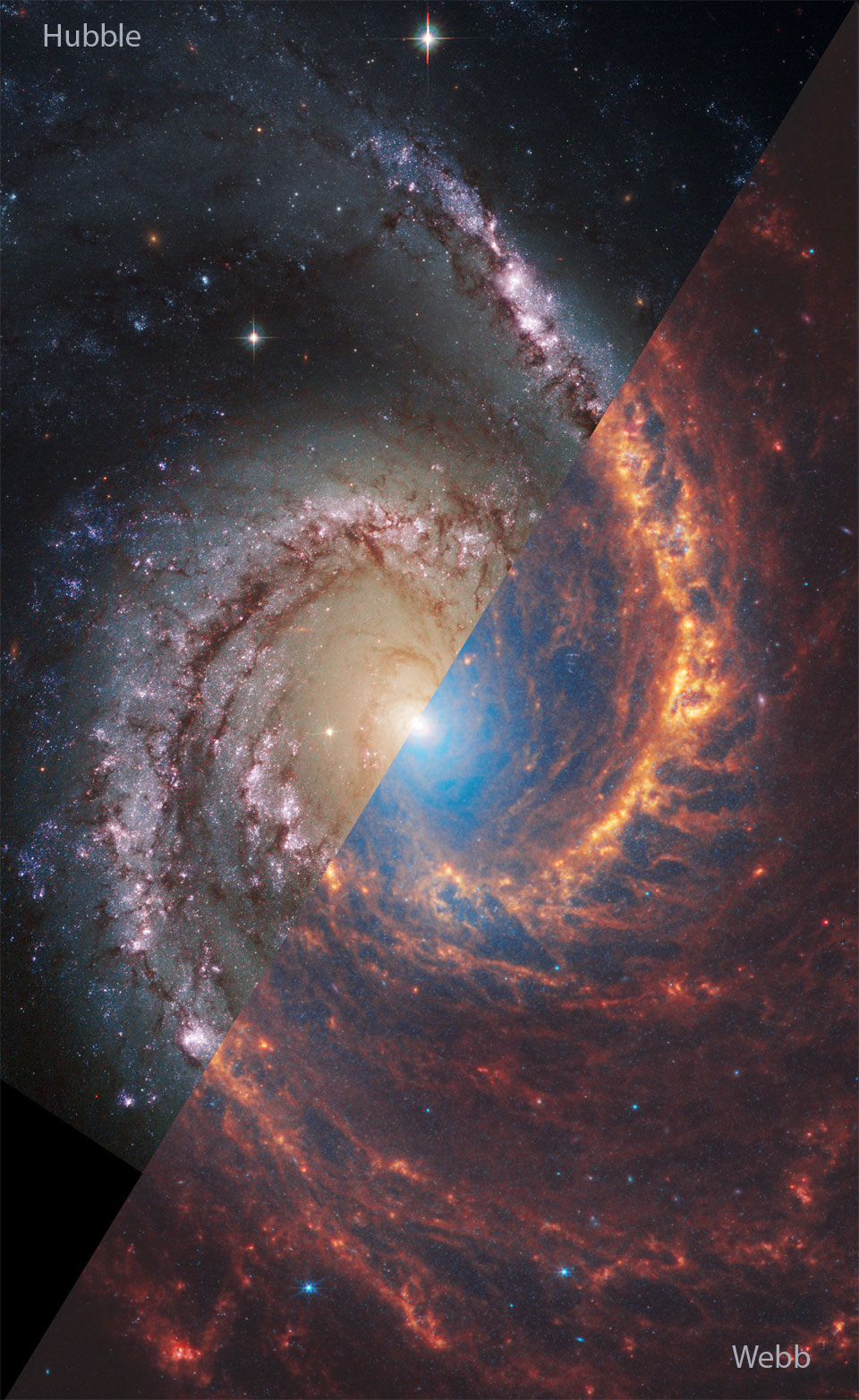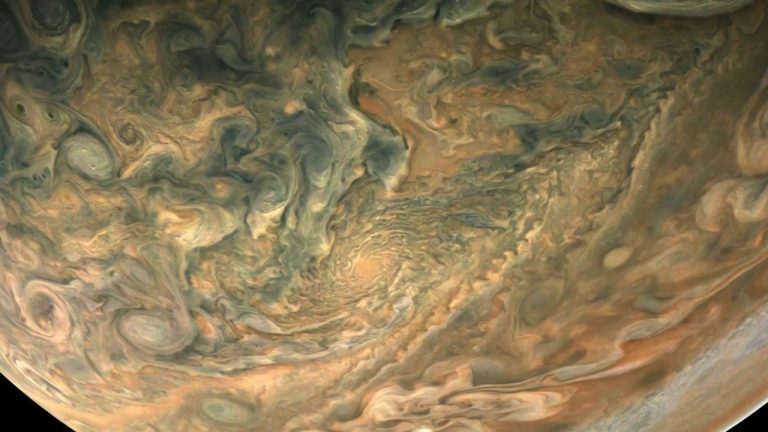2024年2月6日
NGC 1566: A Spiral Galaxy from Webb and Hubble
Image Credit & Copyright: NASA, ESA, CSA, STScI, J. Lee (STScI), T. Williams (Oxford), R. Chandar (UToledo), D. Calzetti (UMass), PHANGS Team
Explanation: What’s different about this galaxy? Very little, which makes the Spanish Dancer galaxy, NGC 1566, one of the most typical and photogenic spirals on the sky. There is something different about this galaxy image, though, because it is a diagonal combination of two images: one by the Hubble Space Telescope on the upper left, and the other by the James Webb Space Telescope on the lower right. The Hubble image was taken in ultraviolet light and highlights the locations of bright blue stars and dark dust along the galaxy’s impressive spiral arms. In contrast, the Webb image was taken in infrared light and highlights where the same dust emits more light than it absorbed. In the rollover image, the other two sides of these images are revealed. Blinking between the two images shows which stars are particularly hot because they glow brighter in ultraviolet light, and the difference between seemingly empty space and infrared-glowing dust.
Image Crunching Opportunity: Take NASA’s Astrophoto Challenge
Tomorrow’s picture: heart tails
NGC 1566: 韦伯与哈勃的螺旋星系影像
影像提供与版权: NASA, ESA, CSA, STScI, J. Lee (STScI), T. Williams (Oxford), R. Chandar (UToledo), D. Calzetti (UMass), PHANGS Team
说明: 这个星系有何特殊之处?几乎没有,也因此西班牙舞者星系(NGC 1566)是天空中最典型和最上镜头的螺旋星系之一。不过,这幅星系影像倒是有一些特别之处,因为它是两张照片以对角线并接:左上角的来自哈勃太空望远镜,右下角的则是韦伯太空望远镜的照片。摄于紫外光波段的哈勃影像,突显这个星系壮观旋臂上的明亮泛蓝恒星及暗色尘埃所在的位置。作为对比、摄于红外光波段的韦伯影像,突显这些相同的尘埃发出的光多于所吸收的。而另一幅切换的影像,则呈现了这些影像其余的半边。于2张影像之间切换,可显示那些恒星在紫外光波段格外明亮,因此特别炽热;此外,还可区别看似空无一物的空间和会散发红外光的尘埃。
图像处理机会: 接受NASA的天文摄影挑战
明日的图片: heart tails







